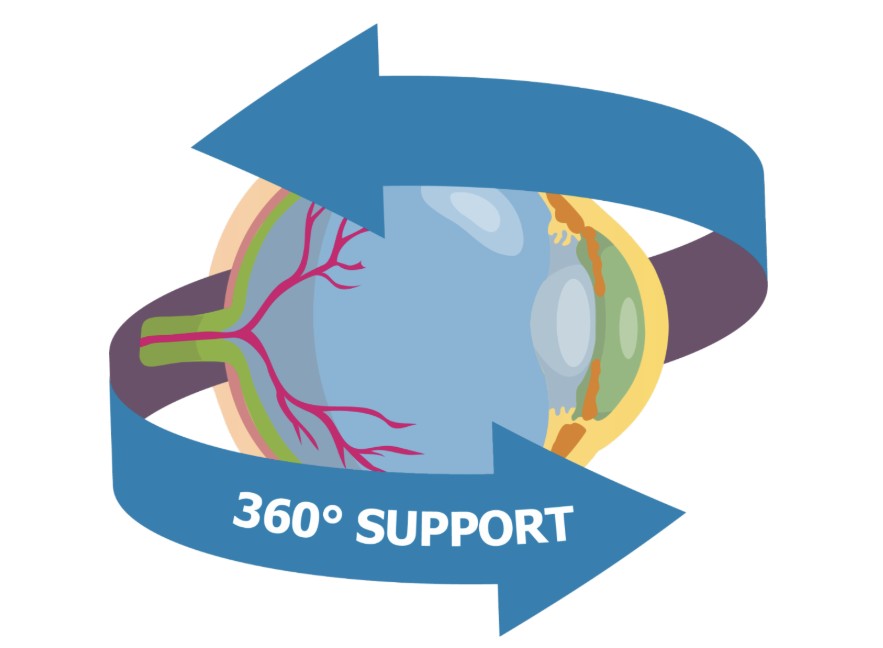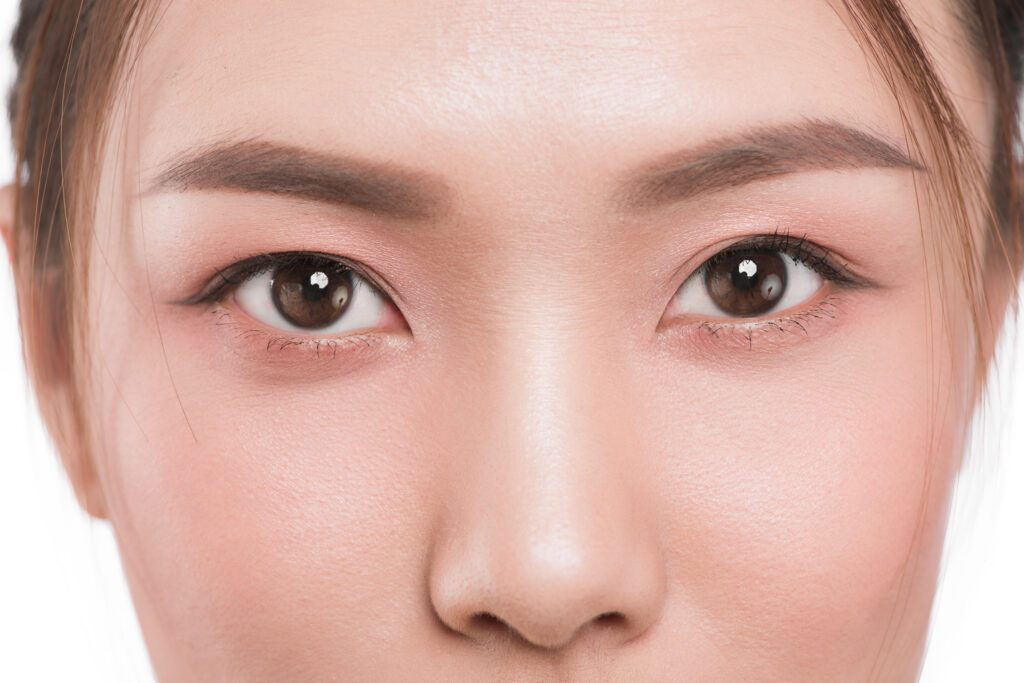
More Than Meets the Eye: Supporting the Full Picture of Vision Health for Practitioner Brands
May is Healthy Vision Month—a great time to think beyond the usual eye exams and focus on the entire visual system. If we think of the eye as a bicycle, the retina might be the headlight, turning visual input into images and lighting the way. But just like any bike, smooth and safe riding depends on more than just the light. The frame, brakes, chain, and wheels all must work together in harmony.
In the same way, parts of the eye like the sclera, aqueous humor, and optic nerve quietly maintain your vision. And just like a bicycle needs regular care and maintenance, your eyes rely on specific nutrients to stay healthy and support your vision.

Astaxanthin is gaining attention in ocular health formulations due to its unique ability to cross the blood brain and blood-retina barrier and neutralize oxidative stress in tissues. As oxidative damage is a known contributor to various eye conditions, integrating astaxanthin into eye health protocols presents a compelling opportunity for practitioners. By recommending astaxanthin-based formulations, practitioners can offer a targeted approach to protecting and supporting long-term visual function.
The Sclera: The Frame That Holds It All Together
The sclera, the tough white outer layer of the eye, is like the bike’s frame, playing a crucial structural role. It holds everything in place, gives the eye shape, and protects its internal components from bumps and strain. Comprised predominantly of dense, collagen-rich connective tissue, the sclera provides essential structural support and serves as a barrier against physical and infectious insults.
Emerging evidence points to the supporting role of astaxanthin, and overall ocular health. Astaxanthin possesses superior antioxidant activity due to its unique molecular structure, allowing it to span lipid bilayers and quench reactive oxygen species across cell membranes. In the context of the sclera, chronic oxidative stress has been implicated in pathological remodeling seen in high myopia (severe near sightedness) and scleral thinning. Astaxanthin’s antioxidant properties may help modulate oxidative stress within scleral fibroblasts, supporting extracellular matrix integrity. While more research is warranted for the impact of astaxanthin on the sclera, astaxanthin’s antioxidant effect is well documented for its ability to promote a redox balance.
The Aqueous Humor: The Eye’s Suspension and Nutrition System
The aqueous humor is a clear fluid that flows through the front part of the eye filling the space between the cornea (the eye’s outermost layer) and the lens. It delivers nutrients, removes waste, and helps maintain pressure inside the eye. In our bike analogy, this is like your suspension and hydraulic system—keeping things balanced, responsive, and well-lubricated so the ride is smooth and stable.
This fluid is produced by the ciliary body (ciliary muscles, blood vessels, connective tissue) and drained through the trabecular meshwork (regulates interocular pressure). But just like a suspension system that can get clogged or leak if neglected, these fluid pathways can become dysfunctional under oxidative stress.
Chronic oxidative stress in the ciliary body and trabecular meshwork can impair aqueous humor dynamics, leading to poor waste removal and increased intraocular pressure. Astaxanthin, due to its unique molecular structure, neutralizes reactive oxygen species (ROS) both at the cellular membrane and within mitochondria. Future research may investigate how this property of astaxanthin may preserve cellular function in the fluid-producing and draining tissues of the eye.
Astaxanthin has also been shown to improve ocular blood flow, which may benefit the entire visual pathway, including ciliary circulation. Optimal ocular blood flow has the opportunity to enhance the consistency of aqueous humor turnover, promoting more effective nutrient delivery and waste removal.
We know that aqueous humor is a modified serum made from blood, secreted by the ciliary processes, and astaxanthin is found in blood and the ciliary body. While astaxanthin has not been directly shown to deposit in the aqueous humor, there is evidence that astaxanthin supplementation modulates its antioxidant capacity and markers of oxidative stress.
The Optic Nerve: The Gear Cable That Connects You to the World
The optic nerve is like the gear cable on your bike—the line that connects your pedal power to motion, or in this case, your visual input to your brain. Without it, signals don’t get through, and nothing moves forward. It’s made up of retinal ganglion cell axons, and it has an incredibly high energy demand to keep those signals firing efficiently.
To function properly, the optic nerve relies on healthy mitochondria—the energy factories inside cells. The optic nerve is vulnerable to oxidative stress and energy depletion because the nerve fibers in the eye, especially those in the retina, don’t have much insulation (called myelin) to help save energy. Therefore, they must work harder to keep things running smoothly. These nerve cells send signals by moving tiny, charged particles—like sodium and potassium ions—in and out of the cell. This requires a lot of energy which is generated from a molecule called ATP made by the cell’s mitochondria. Without enough ATP, those pumps can’t work, and the nerve can’t send messages properly.
Astaxanthin helps maintain healthy mitochondria at the optic nerve keeping this visual “cable” system healthy. Astaxanthin’s unique structure allows it to embed in mitochondrial membranes, where it stabilizes energy production and maintains nerve health. Furthermore, research shows that it can reduce the death of retinal ganglion cells, keeping the optic nerve signaling pathway intact.

Just as a well-functioning bicycle depends on more than just a bright headlight, clear and lasting vision relies on a complex network of structures working in harmony behind the scenes. Developing a comprehensive eye health formulation with AstaReal® Astaxanthin as its cornerstone offers targeted support at the foundational level of visual function.
As one of the most potent naturally occurring antioxidants, astaxanthin provides robust protection against oxidative stress while supporting mitochondrial integrity and performance; critical for the highly energy-dependent ocular system. Additionally, astaxanthin has been shown to enhance ocular blood flow, further contributing to the delivery of oxygen and nutrients essential for maintaining eye health.
References:
- Nishida, Y.; Nawaz, A.; Hecht, K.; Tobe, K. Astaxanthin as a Novel Mitochondrial Regulator: ANewAspectofCarotenoids, beyond Antioxidants. Nutrients 2022, 14, 107.
- Yasir ZH, Sharma R, Zakir SM. Scleral collagen cross linkage in progressive myopia. Indian J Ophthalmol. 2024 Feb 1;72(2):174-180.
- Saito M, Yoshida K, Saito W, Fujiya A, Ohgami K, Kitaichi N, Tsukahara H, Ishida S, Ohno S. Astaxanthin increases choroidal blood flow velocity. Graefes Arch Clin Exp Ophthalmol. 2012 Feb;250(2):239-45
- Giannaccare G, Pellegrini M, Senni C, Bernabei F, Scorcia V, Cicero AFG. Clinical Applications of Astaxanthin in the Treatment of Ocular Diseases: Emerging Insights. Mar Drugs. 2020 May 1;18(5):239
- Hashimoto H. et al. Rinsho Ganka (Jpn J Clin Ophthalmol) 65(4): 465-470, 201
Next Article

Current Newsletter

